| Old computers second life | |
| Retro philosophy | |
|
Why? Una storia personale Retrocomputing e non solo Roadmap |
|
Intel Pentium Pro review
Speed freaks rejoice: Faster versions of the Pentium Pro
have appeared sooner than expected. Intel originally
planned to introduce the new microprocessor at 133 MHz,
but the low end turned out to be 150 MHz, and Intel is now
producing chips that run at 200 MHz. At this rate, the
Pentium Pro should hit 250 MHz by year end.
Three factors account for this progress: the Pentium Pro’s
superpipelined design; better-than-expected results from
early silicon; and Intel’s massive investment in new
wafer-fabrication plants.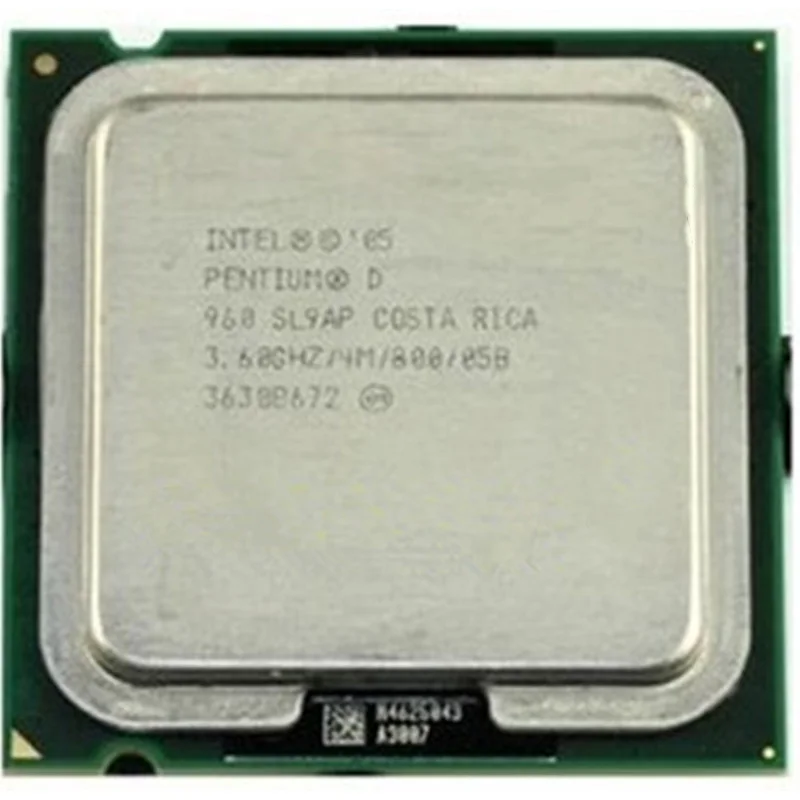
All modern microprocessors pipeline their instructions, a
RISC technique. Like a factory assembly line, pipelining
breaks processing into stages, and the CPU operates on
several instructions at once with each instruction at a
different stage of completion. Superpipelining uses more
and shorter stages; it’s like an assembly line where each
worker’s task is simplified. Because it takes less time to
complete each stage, superpipelined CPUs can run at higher
clock speeds, which yields greater instruction throughput.
While most CPUs have pipelines five to seven stages long,
the Pentium Pro has a 14-stage pipe. Although longer
pipelines extract greater penalties when the CPU
mispredicts a branch, most instructions execute faster,
and the Pentium Pro’s branch prediction is more than 90
percent accurate, according to Intel. Superpipelining with
Superpipelining with
shorter, less-complex stages is the reason why the Pentium
Pro will always run at higher clock speeds than the
five-stage Pentium chip, even when both chips use the same
process technology.
Nevertheless, process technology plays a major role, too.
Intel makes the 150-MHz Pentium Pro on an older 0.6-micron
process, but the 166-MHz and faster versions use Intel’s
new 0.35-micron technology. Signals flow more quickly
through the more densely packed circuits, permitting
higher clock speeds. In 1995, Intel became the first
company to manufacture CPUs in volume on a 0.35-micron
process, and Intel is outspending everyone on new fab
capacity.
To boost performance even further, Intel is also making
some Pentium Pro processors with 512-KB secondary caches
built into the package. That’s twice as large as the
That’s twice as large as the
256-KB caches originally introduced. The accompanying
SPECmark numbers show the result: A 166-MHz Pentium Pro
with a 512-KB cache virtually matches the performance of a
180-MHz Pentium Pro with a 256-KB cache. (The 166-MHz
version of the chip also has a faster memory bus — 66 MHz
versus 60 MHz for the 180-MHz Pentium Pro.)
Higher clock speeds and bigger caches will compensate for
the Pentium Pro’s relatively poor performance when running
older 16-bit software. Although a fifth-generation Pentium
still outperforms a sixth-generation Pentium Pro when
running 16-bit code at similar clock speeds, the fastest
Pentium currently tops out at 166 MHz. Future Pentiums may
get a little faster, but they will never catch up to the
Pentium Pro’s really high clock frequencies.
Pentium Pro Lineup Core speed 150
MHz 166
MHz 180
MHz 200
MHz 200 MHz Bus speed 60
MHz 66
MHz 60
MHz 66
MHz 66 MHz L2 Cache 256
KB 512
KB 256
KB 256
KB 512 KB Process 0. 6
6
micron 0.35 micron 0.35 micron 0.35 micron 0.35
micron Production* Q4
1995 Q1
1996 Q4
1995 Q4
1995 Q2 1996 Price (1000)
$974
$1682
$1075
$1325 $1989 *Intel's target
Pentium Pro SPECmarks
With twice the L2 cache,
the 166-MHz Pentium Pro keeps pace with the 180-MHz
version. SPECmark 95 results provided by Intel.
Copyright © 1994-1998 BYTE
Pentium | it’s… What is a Pentium?
Pentium (pronounced: Pentium ) is a trademark of several generations of microprocessors in the Intel family since March 22, 1993.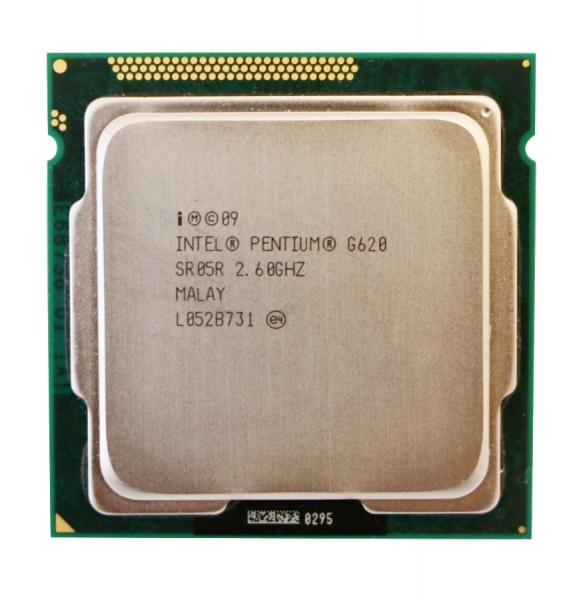 The Pentium is Intel’s fifth generation processor and has replaced the Intel 80486 (often referred to simply as the 486).
The Pentium is Intel’s fifth generation processor and has replaced the Intel 80486 (often referred to simply as the 486).
Contents
brand |
History
Intel Pentium 60, the first Pentium
model
In June 1989, Vinod Dam made the first sketches of a processor codenamed P5. He did not suspect that this particular product would be one of the main achievements of Intel Corporation. At the end of 19For 91 years, the design of the processor layout was completed, and engineers were able to run software on it. The stage of topology optimization and work efficiency improvement has begun. In February 1992, the design was basically completed, and comprehensive testing of an experimental batch of processors began. In April 1992, a decision was made to start industrial production of processors, and Oregon Factory No. 5 was chosen as the main industrial base. Industrial development of production and final fine-tuning of technical characteristics began. On October 1992 Intel announced that the fifth generation processors, formerly codenamed P5, would be called Pentium, not 586, as many had assumed. This is due to the fact that many processor manufacturers have actively mastered the production of «clones» (and not only) of the 386 and 486 processors. Intel was going to register the name «586» as a trademark so that no one else could manufacture processors with that name. , however, it turned out that it was impossible to register the numbers as a trademark, so it was decided to name the new processors «Pentium» (from « pent — «- five), which also indicated the generation of this processor.
The stage of topology optimization and work efficiency improvement has begun. In February 1992, the design was basically completed, and comprehensive testing of an experimental batch of processors began. In April 1992, a decision was made to start industrial production of processors, and Oregon Factory No. 5 was chosen as the main industrial base. Industrial development of production and final fine-tuning of technical characteristics began. On October 1992 Intel announced that the fifth generation processors, formerly codenamed P5, would be called Pentium, not 586, as many had assumed. This is due to the fact that many processor manufacturers have actively mastered the production of «clones» (and not only) of the 386 and 486 processors. Intel was going to register the name «586» as a trademark so that no one else could manufacture processors with that name. , however, it turned out that it was impossible to register the numbers as a trademark, so it was decided to name the new processors «Pentium» (from « pent — «- five), which also indicated the generation of this processor.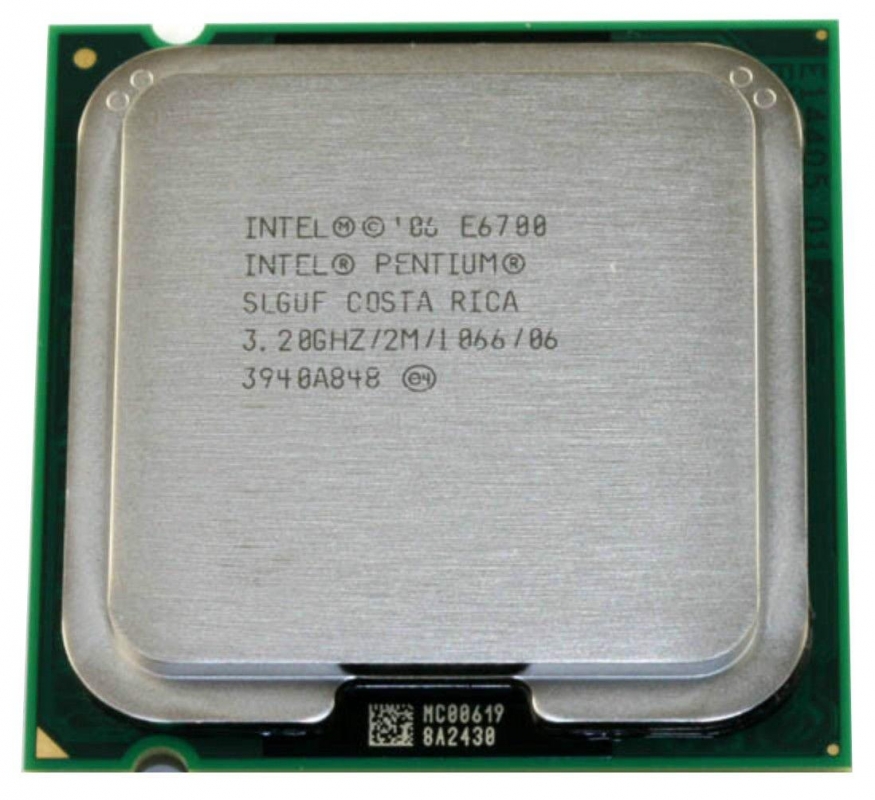 On March 22, 1993, a presentation of a new microprocessor took place, a few months later the first computers based on them appeared.
On March 22, 1993, a presentation of a new microprocessor took place, a few months later the first computers based on them appeared.
Alternate History
The story about Vinod Dam is the official version of Intel, but there is another version of the appearance of this processor. In the 1980s, in Russia, Vladimir Mstislavovich Pentkovsky, who worked at the Russian Academy of Sciences under the leadership of Babayan, worked on the Elbrus processor. Around 19On the 89th, a delegation from Intel visited the Computer Science Laboratories of the Russian Academy of Sciences, where they met with Pentkovsky. Pentkovsky received an invitation to come to the United States to exchange experience at the Intel Research Center. Pentkovsky did not return from this trip to Russia, and a few months later Intel officially announced the development of a fundamentally new processor called the Pentium (named after the developer).
Main differences from the 486th processor
- Superscalar architecture.
 Thanks to the use of superscalar architecture, the processor can execute 2 instructions per 1 cycle. This possibility exists due to the presence of two conveyors — u- and v-conveyor. u-pipeline — the main one, performs all operations on integers and real numbers; v-pipeline — auxiliary, performs only simple operations on integers and partially on real ones. In order for older programs (for 486) to take full advantage of the possibilities of this architecture, they had to be recompiled. Pentium is the first
Thanks to the use of superscalar architecture, the processor can execute 2 instructions per 1 cycle. This possibility exists due to the presence of two conveyors — u- and v-conveyor. u-pipeline — the main one, performs all operations on integers and real numbers; v-pipeline — auxiliary, performs only simple operations on integers and partially on real ones. In order for older programs (for 486) to take full advantage of the possibilities of this architecture, they had to be recompiled. Pentium is the first
nine0016 64-bit data bus. Allows the Pentium processor to exchange twice as much data with RAM as 486 in one bus cycle (at the same clock speed). - Branch address prediction mechanism. Used to reduce pipeline idle time caused by instruction fetch delays when the address counter changes while branching instructions are executing. To do this, the processor uses the branch address buffer BTB (Branch Target Buffer), which uses branch address prediction algorithms. nine0017
- Separate code and data caching.
 Pentium processors use a 16Kb L1 cache, divided into 2 segments: 8Kb for data and 8Kb for instructions. This improves performance and allows double caching to be available more often than was previously possible. In addition, the caching mechanism has been changed.
Pentium processors use a 16Kb L1 cache, divided into 2 segments: 8Kb for data and 8Kb for instructions. This improves performance and allows double caching to be available more often than was previously possible. In addition, the caching mechanism has been changed. - Improved floating point unit (FPU, coprocessor).
- Symmetric multiprocessing (SMP). nine0017
Models
Initially (March 22, 1993), only two models were introduced, based on the P5 core with frequencies of 60 and 66 MHz. However, more efficient Pentium processors were later released, but based on improved cores. In addition, mobile versions of processors and Pentium OverDrive processors were presented.
| Core codename | P5 | P54C | P54CS | P55C | |||||||||
|---|---|---|---|---|---|---|---|---|---|---|---|---|---|
| Process (nm) | 800 | 600 | 350 | ||||||||||
| Core Clock (MHz) |
60 | 66 | 75 | 90 | 100 | 120 | 133 | 150 | 166 | 200 | 166 | 200 | 233 |
| Announced | March 23, 1993 | 1994 | March 7, 1994 | March 27, 1995 | June 12, 1995 | January 4, 1996 | June 10, 1996 | January 8, 1997 | June 2, 1997 | ||||
P5
First generation Pentium processors. The two (only) models were announced on March 23, 1993 and ran at 60 MHz and 66 MHz core clocks, the system bus (FSB) was equal to the core frequency, i.e. the core multiplier was «1.0». The second-level cache was located on the motherboard and could be up to 1 MB in size. The processor was produced in a 273-pin CPGA package and installed in a Socket 4 package and operated at 5 V. All Pentium processors are SL Enhanced, which means that they have an SMM system that provides reduced power consumption. Early versions of processors with frequencies of 60-100 MHz (P5 and P54C cores) had a bug in the FPU (math coprocessor), which, in rare cases, led to a decrease in the accuracy of the division operation. This defect was discovered in Lynchburg (USA, Virginia) on 1994 and became known as the «Pentium FDIV bug». Processors on the P5 core were manufactured using the 800 nanometer process technology, according to the bipolar F0 0f c7 c8) of the first generation Pentium processors, they were not advised to buy these models.
The two (only) models were announced on March 23, 1993 and ran at 60 MHz and 66 MHz core clocks, the system bus (FSB) was equal to the core frequency, i.e. the core multiplier was «1.0». The second-level cache was located on the motherboard and could be up to 1 MB in size. The processor was produced in a 273-pin CPGA package and installed in a Socket 4 package and operated at 5 V. All Pentium processors are SL Enhanced, which means that they have an SMM system that provides reduced power consumption. Early versions of processors with frequencies of 60-100 MHz (P5 and P54C cores) had a bug in the FPU (math coprocessor), which, in rare cases, led to a decrease in the accuracy of the division operation. This defect was discovered in Lynchburg (USA, Virginia) on 1994 and became known as the «Pentium FDIV bug». Processors on the P5 core were manufactured using the 800 nanometer process technology, according to the bipolar F0 0f c7 c8) of the first generation Pentium processors, they were not advised to buy these models. Production had to be stopped for a while. However, the production of improved processors based on the P54C core soon began ….
Production had to be stopped for a while. However, the production of improved processors based on the P54C core soon began ….
P54C
On March 7, 1994, the second generation Pentium processors were released. Initially, models were released with clock speeds of 90 and 100 MHz, but then a model with a frequency of 75 MHz was released. The processors were manufactured using 600 nm bipolar BiCMOS technology, which made it possible to reduce the die size to 148 mm² (the core contained 3.2 million transistors) and reduce power consumption to 10.1 W (for the Pentium 100). The supply voltage was also reduced to 3.3 V, the current consumed by the processor is 3.25 A. The processor was produced in a 296-pin CPGA package and installed in Socket 5 or Socket 7 and was not compatible with Socket 4. These processors have improved SMM system, added advanced programmable interrupt controller
nine0161 P54CS
The first processors based on this core were released on March 27, 1995. By and large, this core is a P54C core manufactured using 350 nm bipolar BiCMOS technology, which made it possible to further reduce the core die size to 91 mm² (Pentium 120 and 133 processors), but soon, as a result of core optimization, its size was reduced to 83 mm² with the same number of transistors. At the same time, the Pentium 200 consumed a current of 4.6 A, and its maximum dissipated energy (heat dissipation) was 15.5 W. nine0007
By and large, this core is a P54C core manufactured using 350 nm bipolar BiCMOS technology, which made it possible to further reduce the core die size to 91 mm² (Pentium 120 and 133 processors), but soon, as a result of core optimization, its size was reduced to 83 mm² with the same number of transistors. At the same time, the Pentium 200 consumed a current of 4.6 A, and its maximum dissipated energy (heat dissipation) was 15.5 W. nine0007
| Multiplier | Processor |
|---|---|
| 1.5 | Pentium 75, Pentium 90, Pentium 100 |
| 2.0 | Pentium 120, Pentium 133 |
| 2.5 | Pentium 150, Pentium 166 |
| 3.0 | Pentium 200 |
P55C
Pentium MMX processor. Top view
On January 8, 1997, Pentium processors based on the third generation P5 core (P55C) were released. The Intel R&D Center in Haifa (Israel) added a new set of instructions to the P55C core called the Pentium MMX). The new processor includes an MMX device with command pipeline processing, L1 cache increased to 32 KB (16 KB for data and 16 KB for instructions). The new processor consists of 4.5 million transistors and is manufactured using advanced 350nm CMOS technology using silicon semiconductors, operates at a voltage of 2.8V. MMX). The die area of Pentium MMX processors is 141 mm². Processors were released in 296-pin CPGA or PPGA package for Socket 7.
The Intel R&D Center in Haifa (Israel) added a new set of instructions to the P55C core called the Pentium MMX). The new processor includes an MMX device with command pipeline processing, L1 cache increased to 32 KB (16 KB for data and 16 KB for instructions). The new processor consists of 4.5 million transistors and is manufactured using advanced 350nm CMOS technology using silicon semiconductors, operates at a voltage of 2.8V. MMX). The die area of Pentium MMX processors is 141 mm². Processors were released in 296-pin CPGA or PPGA package for Socket 7.
Pentium OverDrive
Several generations of Pentium OverDrive were released.
- In 1995, the first Pentium OverDrive was released (uses the P24T core). It was designed for installation in sockets such as Socket 2 or Socket 3 and worked with a supply voltage of 5 V, that is, it served to upgrade systems using the 486 processor without replacing the motherboard. At the same time, this processor had all the functions of the first generation Pentium processor (on the P5 core).
 Two models were released, operating at frequencies of 63 MHz and 83 MHz, the older one consumed a current of 2.8 A and had a power dissipation of 14 watts. Due to the high cost, this processor left before it appeared. And although after some time (March 4, 1996), these processors were replaced by Pentium ODP5V with frequencies of 120 and 133 MHz, based on the P5T core (in fact, it is the P54CS core), they also did not become popular.
Two models were released, operating at frequencies of 63 MHz and 83 MHz, the older one consumed a current of 2.8 A and had a power dissipation of 14 watts. Due to the high cost, this processor left before it appeared. And although after some time (March 4, 1996), these processors were replaced by Pentium ODP5V with frequencies of 120 and 133 MHz, based on the P5T core (in fact, it is the P54CS core), they also did not become popular. - March 4, 1996 the next version of Pentium OverDrive (Pentium ODP3V) is released on the P54CT core. This kernel is based on the P54CS kernel. The processor was available in a 320-pin CPGA package for Socket 5 or Socket 7.
- On March 3, 1997, two Pentium ODPMT models (with frequencies of 150 and 166 MHz) based on the P54CTB core (analogous to P55C) are released, later, on August 4, 19In 1997, two more models came out on the same core (with frequencies of 180 and 200 MHz). They were produced in 320-pin CPGA packages and were designed for Socket 5 or Socket 7 (Pentium ODPMT-200 MMX for Socket 7 only).

Tillamook
Processors based on this core were intended for portable computers. The Tillamook core (named after a city in Oregon, USA) is a reduced voltage P55C core — the 300 MHz model ran at 2.0 V, drew 4.5 A, and had a thermal output of 8.4 W. Older models (with a frequency of 233, 266 and 300 MHz) were produced using a 250 nm process technology and had a crystal with an area of 90 mm², the younger ones (133 and 150 MHz) using the 280 nm process technology and had a 140 mm² die, the rest were produced using both process technologies. Depending on the case type (TCP or CBGA), the processor was either soldered to the motherboard, or installed in a special MMC1 module. The first models were released in January 1997.
Other processors using the Pentium
brand
Intel Pentium processors were very popular, and Intel decided not to abandon the Pentium brand, naming subsequent processors, although they were very different from the first Pentiums and did not belong to the fifth generation.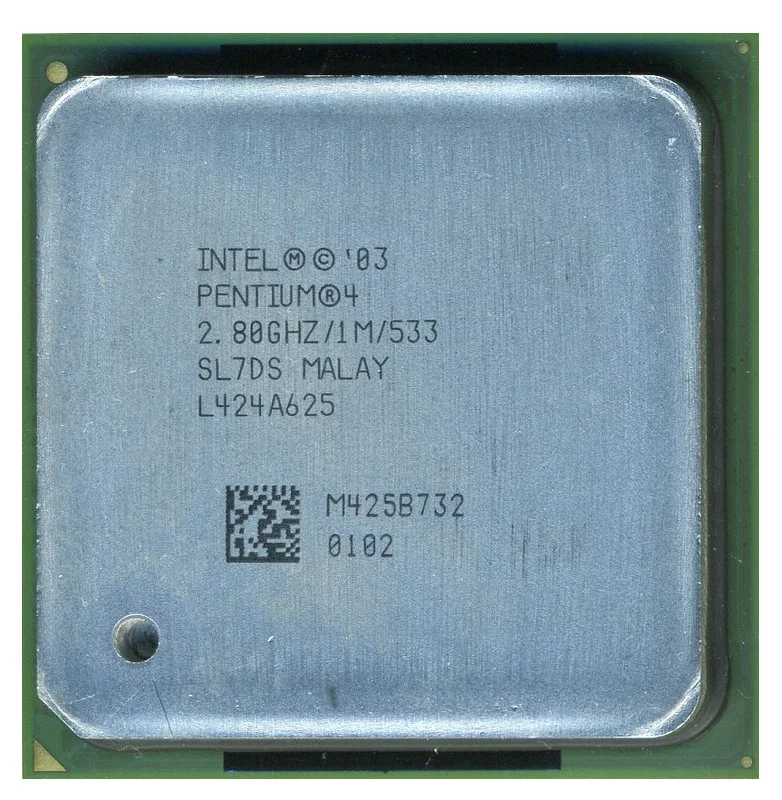 These are:
These are:
|
|
|
|
Specifications for various cores
| P5 | P54C | P54CS | P55C | |
|---|---|---|---|---|
| Announcement date of the first model | March 23, 1993 | March 7, 1994 | March 27, 1995 | January 8, 1997 |
| Clock frequencies, MHz | 60, 66 | 75, 90, 100 | 120, 133, 150, 166, 200 | 166, 200, 233 |
| System bus frequency (FSB), MHz | 60, 66 | 50, 60, 66 | 60, 66 | 66 |
| L1 cache, KB | 8 (for data)+8 (for instructions) | 16+16 | ||
| L2 cache, KB | external up to 1 MB | |||
| Supply voltage, V | 5 | 3. 3 3 |
2.8/3.3 | |
| Number of transistors, million | 3.1 | 3.2 | 3.3 | 4.5 |
| Chip area, mm² | 294 | 148 | 90 | 141 |
| Maximum heat dissipation, W | 16 | 10.1 | 15.5 | 16 |
| Process technology, nm | 800 | 600 | 350 | |
| Connector | Socket 4 | Socket 5, Socket 7 | Socket 5, Socket 7 (150-200 — Socket 7 only) | Socket 7 |
| Housing | 273-pin PGA | 296-pin CPGA | 296-pin CPGA/PPGA | |
| Addressable memory | 4 GB | |||
| Register capacity | 32 | |||
| External bus width | 64 | |||
| Address bus width | 32 | |||
Links
- Detailed list of Pentium processors with photos (eng.
 )
) - Pentium Processor Documentation
- Electrical parameters of processors, in particular Intel Pentium (English)
- Detailed specifications for processors
Pentium | it’s… What is a Pentium?
Pentium (pronounced: Pentium ) is a trademark of several generations of microprocessors in the Intel family since March 22, 1993. The Pentium is Intel’s fifth generation processor and has replaced the Intel 80486 (often referred to simply as the 486).
Contents
brand |
History
Intel Pentium 60, the first Pentium
model
In June 1989, Vinod Dam made the first sketches of a processor codenamed P5.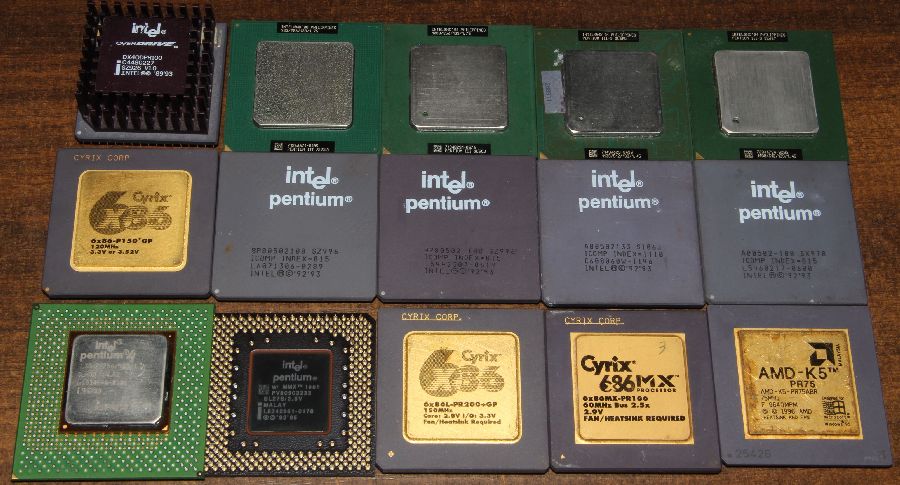 He did not suspect that this particular product would be one of the main achievements of Intel Corporation. At the end of 1991, the design of the processor layout was completed, and engineers were able to run software on it. The stage of topology optimization and work efficiency improvement has begun. February 1992 years of design was basically completed, comprehensive testing of an experimental batch of processors began. In April 1992, a decision was made to start industrial production of processors, and Oregon Factory No. 5 was chosen as the main industrial base. Industrial development of production and final fine-tuning of technical characteristics began. In October 1992, Intel announced that the fifth-generation processors, formerly codenamed P5, would be called Pentium, not 586, as many had assumed. This is due to the fact that many processor manufacturers have actively mastered the production of «clones» (and not only) of the 386 and 486 processors. Intel was going to register the name «586» as a trademark so that no one else could manufacture processors with that name.
He did not suspect that this particular product would be one of the main achievements of Intel Corporation. At the end of 1991, the design of the processor layout was completed, and engineers were able to run software on it. The stage of topology optimization and work efficiency improvement has begun. February 1992 years of design was basically completed, comprehensive testing of an experimental batch of processors began. In April 1992, a decision was made to start industrial production of processors, and Oregon Factory No. 5 was chosen as the main industrial base. Industrial development of production and final fine-tuning of technical characteristics began. In October 1992, Intel announced that the fifth-generation processors, formerly codenamed P5, would be called Pentium, not 586, as many had assumed. This is due to the fact that many processor manufacturers have actively mastered the production of «clones» (and not only) of the 386 and 486 processors. Intel was going to register the name «586» as a trademark so that no one else could manufacture processors with that name. , however, it turned out that it was impossible to register the numbers as a trademark, so it was decided to name the new processors «Pentium» (from « pent — «- five), which also indicated the generation of this processor. On March 22, 1993, a presentation of a new microprocessor took place, a few months later the first computers based on them appeared.
, however, it turned out that it was impossible to register the numbers as a trademark, so it was decided to name the new processors «Pentium» (from « pent — «- five), which also indicated the generation of this processor. On March 22, 1993, a presentation of a new microprocessor took place, a few months later the first computers based on them appeared.
Alternate History
The story about Vinod Dam is the official version of Intel, but there is another version of the appearance of this processor. In the 1980s, in Russia, Vladimir Mstislavovich Pentkovsky, who worked at the Russian Academy of Sciences under the leadership of Babayan, worked on the Elbrus processor. Around 19On the 89th, a delegation from Intel visited the Computer Science Laboratories of the Russian Academy of Sciences, where they met with Pentkovsky. Pentkovsky received an invitation to come to the United States to exchange experience at the Intel Research Center. Pentkovsky did not return from this trip to Russia, and a few months later Intel officially announced the development of a fundamentally new processor called the Pentium (named after the developer).
Main differences from the 486th processor
- Superscalar architecture. Thanks to the use of superscalar architecture, the processor can execute 2 instructions per 1 cycle. This possibility exists due to the presence of two conveyors — u- and v-conveyor. u-pipeline — the main one, performs all operations on integers and real numbers; v-pipeline — auxiliary, performs only simple operations on integers and partially on real ones. In order for older programs (for 486) to take full advantage of the possibilities of this architecture, they had to be recompiled. Pentium is the first
nine0016 64-bit data bus. Allows the Pentium processor to exchange twice as much data with RAM as 486 in one bus cycle (at the same clock speed). - Branch address prediction mechanism. Used to reduce pipeline idle time caused by instruction fetch delays when the address counter changes while branching instructions are executing. To do this, the processor uses the branch address buffer BTB (Branch Target Buffer), which uses branch address prediction algorithms.
 nine0017
nine0017
- Separate code and data caching. Pentium processors use a 16Kb L1 cache, divided into 2 segments: 8Kb for data and 8Kb for instructions. This improves performance and allows double caching to be available more often than was previously possible. In addition, the caching mechanism has been changed.
- Improved floating point unit (FPU, coprocessor).
- Symmetric multiprocessing (SMP). nine0017
Models
Initially (March 22, 1993), only two models were introduced, based on the P5 core with frequencies of 60 and 66 MHz. However, more efficient Pentium processors were later released, but based on improved cores. In addition, mobile versions of processors and Pentium OverDrive processors were presented.
| Core codename | P5 | P54C | P54CS | P55C | |||||||||
|---|---|---|---|---|---|---|---|---|---|---|---|---|---|
| Process (nm) | 800 | 600 | 350 | ||||||||||
| Core Clock (MHz) |
60 | 66 | 75 | 90 | 100 | 120 | 133 | 150 | 166 | 200 | 166 | 200 | 233 |
| Announced | March 23, 1993 | 1994 | March 7, 1994 | March 27, 1995 | June 12, 1995 | January 4, 1996 | June 10, 1996 | January 8, 1997 | June 2, 1997 | ||||
P5
First generation Pentium processors. The two (only) models were announced on March 23, 1993 and ran at 60 MHz and 66 MHz core clocks, the system bus (FSB) was equal to the core frequency, i.e. the core multiplier was «1.0». The second-level cache was located on the motherboard and could be up to 1 MB in size. The processor was produced in a 273-pin CPGA package and installed in a Socket 4 package and operated at 5 V. All Pentium processors are SL Enhanced, which means that they have an SMM system that provides reduced power consumption. Early versions of processors with frequencies of 60-100 MHz (P5 and P54C cores) had a bug in the FPU (math coprocessor), which, in rare cases, led to a decrease in the accuracy of the division operation. This defect was discovered in Lynchburg (USA, Virginia) on 1994 and became known as the «Pentium FDIV bug». Processors on the P5 core were manufactured using the 800 nanometer process technology, according to the bipolar F0 0f c7 c8) of the first generation Pentium processors, they were not advised to buy these models.
The two (only) models were announced on March 23, 1993 and ran at 60 MHz and 66 MHz core clocks, the system bus (FSB) was equal to the core frequency, i.e. the core multiplier was «1.0». The second-level cache was located on the motherboard and could be up to 1 MB in size. The processor was produced in a 273-pin CPGA package and installed in a Socket 4 package and operated at 5 V. All Pentium processors are SL Enhanced, which means that they have an SMM system that provides reduced power consumption. Early versions of processors with frequencies of 60-100 MHz (P5 and P54C cores) had a bug in the FPU (math coprocessor), which, in rare cases, led to a decrease in the accuracy of the division operation. This defect was discovered in Lynchburg (USA, Virginia) on 1994 and became known as the «Pentium FDIV bug». Processors on the P5 core were manufactured using the 800 nanometer process technology, according to the bipolar F0 0f c7 c8) of the first generation Pentium processors, they were not advised to buy these models. Production had to be stopped for a while. However, the production of improved processors based on the P54C core soon began ….
Production had to be stopped for a while. However, the production of improved processors based on the P54C core soon began ….
P54C
On March 7, 1994, the second generation Pentium processors were released. Initially, models were released with clock speeds of 90 and 100 MHz, but then a model with a frequency of 75 MHz was released. The processors were manufactured using 600 nm bipolar BiCMOS technology, which made it possible to reduce the die size to 148 mm² (the core contained 3.2 million transistors) and reduce power consumption to 10.1 W (for the Pentium 100). The supply voltage was also reduced to 3.3 V, the current consumed by the processor is 3.25 A. The processor was produced in a 296-pin CPGA package and installed in Socket 5 or Socket 7 and was not compatible with Socket 4. These processors have improved SMM system, added advanced programmable interrupt controller
nine0161 P54CS
The first processors based on this core were released on March 27, 1995. By and large, this core is a P54C core manufactured using 350 nm bipolar BiCMOS technology, which made it possible to further reduce the core die size to 91 mm² (Pentium 120 and 133 processors), but soon, as a result of core optimization, its size was reduced to 83 mm² with the same number of transistors. At the same time, the Pentium 200 consumed a current of 4.6 A, and its maximum dissipated energy (heat dissipation) was 15.5 W. nine0007
By and large, this core is a P54C core manufactured using 350 nm bipolar BiCMOS technology, which made it possible to further reduce the core die size to 91 mm² (Pentium 120 and 133 processors), but soon, as a result of core optimization, its size was reduced to 83 mm² with the same number of transistors. At the same time, the Pentium 200 consumed a current of 4.6 A, and its maximum dissipated energy (heat dissipation) was 15.5 W. nine0007
| Multiplier | Processor |
|---|---|
| 1.5 | Pentium 75, Pentium 90, Pentium 100 |
| 2.0 | Pentium 120, Pentium 133 |
| 2.5 | Pentium 150, Pentium 166 |
| 3.0 | Pentium 200 |
P55C
Pentium MMX processor. Top view
On January 8, 1997, Pentium processors based on the third generation P5 core (P55C) were released. The Intel R&D Center in Haifa (Israel) added a new set of instructions to the P55C core called the Pentium MMX). The new processor includes an MMX device with command pipeline processing, L1 cache increased to 32 KB (16 KB for data and 16 KB for instructions). The new processor consists of 4.5 million transistors and is manufactured using advanced 350nm CMOS technology using silicon semiconductors, operates at a voltage of 2.8V. MMX). The die area of Pentium MMX processors is 141 mm². Processors were released in 296-pin CPGA or PPGA package for Socket 7.
The Intel R&D Center in Haifa (Israel) added a new set of instructions to the P55C core called the Pentium MMX). The new processor includes an MMX device with command pipeline processing, L1 cache increased to 32 KB (16 KB for data and 16 KB for instructions). The new processor consists of 4.5 million transistors and is manufactured using advanced 350nm CMOS technology using silicon semiconductors, operates at a voltage of 2.8V. MMX). The die area of Pentium MMX processors is 141 mm². Processors were released in 296-pin CPGA or PPGA package for Socket 7.
Pentium OverDrive
Several generations of Pentium OverDrive were released.
- In 1995, the first Pentium OverDrive was released (uses the P24T core). It was designed for installation in sockets such as Socket 2 or Socket 3 and worked with a supply voltage of 5 V, that is, it served to upgrade systems using the 486 processor without replacing the motherboard. At the same time, this processor had all the functions of the first generation Pentium processor (on the P5 core).
 Two models were released, operating at frequencies of 63 MHz and 83 MHz, the older one consumed a current of 2.8 A and had a power dissipation of 14 watts. Due to the high cost, this processor left before it appeared. And although after some time (March 4, 1996), these processors were replaced by Pentium ODP5V with frequencies of 120 and 133 MHz, based on the P5T core (in fact, it is the P54CS core), they also did not become popular.
Two models were released, operating at frequencies of 63 MHz and 83 MHz, the older one consumed a current of 2.8 A and had a power dissipation of 14 watts. Due to the high cost, this processor left before it appeared. And although after some time (March 4, 1996), these processors were replaced by Pentium ODP5V with frequencies of 120 and 133 MHz, based on the P5T core (in fact, it is the P54CS core), they also did not become popular. - March 4, 1996 the next version of Pentium OverDrive (Pentium ODP3V) is released on the P54CT core. This kernel is based on the P54CS kernel. The processor was available in a 320-pin CPGA package for Socket 5 or Socket 7.
- On March 3, 1997, two Pentium ODPMT models (with frequencies of 150 and 166 MHz) based on the P54CTB core (analogous to P55C) are released, later, on August 4, 19In 1997, two more models came out on the same core (with frequencies of 180 and 200 MHz). They were produced in 320-pin CPGA packages and were designed for Socket 5 or Socket 7 (Pentium ODPMT-200 MMX for Socket 7 only).
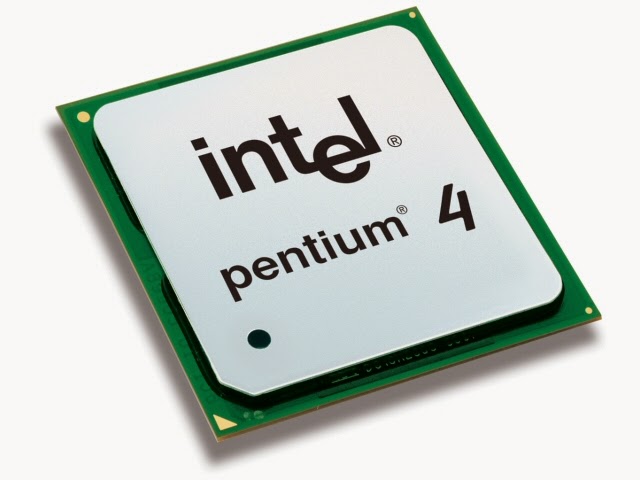
Tillamook
Processors based on this core were intended for portable computers. The Tillamook core (named after a city in Oregon, USA) is a reduced voltage P55C core — the 300 MHz model ran at 2.0 V, drew 4.5 A, and had a thermal output of 8.4 W. Older models (with a frequency of 233, 266 and 300 MHz) were produced using a 250 nm process technology and had a crystal with an area of 90 mm², the younger ones (133 and 150 MHz) using the 280 nm process technology and had a 140 mm² die, the rest were produced using both process technologies. Depending on the case type (TCP or CBGA), the processor was either soldered to the motherboard, or installed in a special MMC1 module. The first models were released in January 1997.
Other processors using the Pentium
brand
Intel Pentium processors were very popular, and Intel decided not to abandon the Pentium brand, naming subsequent processors, although they were very different from the first Pentiums and did not belong to the fifth generation. These are:
These are:
|
|
|
|
Specifications for various cores
| P5 | P54C | P54CS | P55C | |
|---|---|---|---|---|
| Announcement date of the first model | March 23, 1993 | March 7, 1994 | March 27, 1995 | January 8, 1997 |
| Clock frequencies, MHz | 60, 66 | 75, 90, 100 | 120, 133, 150, 166, 200 | 166, 200, 233 |
| System bus frequency (FSB), MHz | 60, 66 | 50, 60, 66 | 60, 66 | 66 |
| L1 cache, KB | 8 (for data)+8 (for instructions) | 16+16 | ||
| L2 cache, KB | external up to 1 MB | |||
| Supply voltage, V | 5 | 3. 3 3 |
2.8/3.3 | |
| Number of transistors, million | 3.1 | 3.2 | 3.3 | 4.5 |
| Chip area, mm² | 294 | 148 | 90 | 141 |
| Maximum heat dissipation, W | 16 | 10.1 | 15.5 | 16 |
| Process technology, nm | 800 | 600 | 350 | |
| Connector | Socket 4 | Socket 5, Socket 7 | Socket 5, Socket 7 (150-200 — Socket 7 only) | Socket 7 |
| Housing | 273-pin PGA | 296-pin CPGA | 296-pin CPGA/PPGA | |
| Addressable memory | 4 GB | |||
| Register capacity | 32 | |||
| External bus width | 64 | |||
| Address bus width | 32 | |||
Links
- Detailed list of Pentium processors with photos (eng.
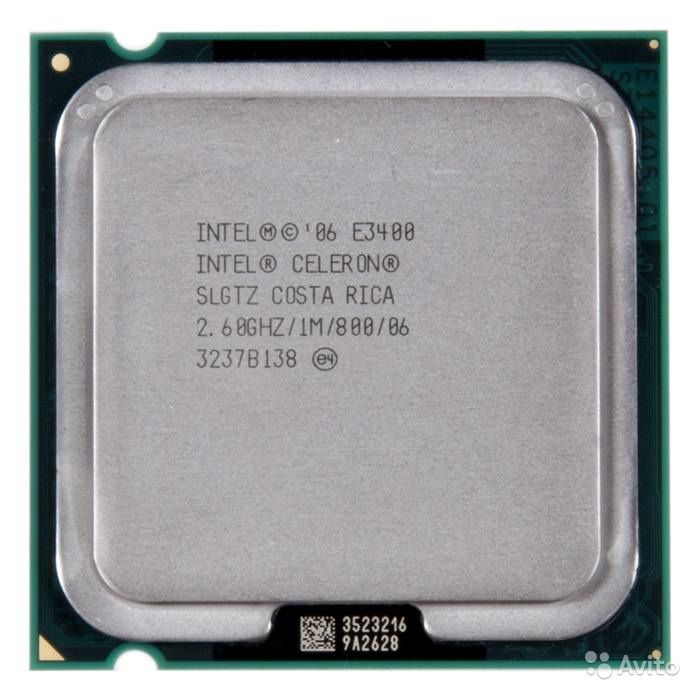


 CPU e motherboard history, components e retrogaming, benchmark e speedtest. Focus sulle rarità e particolare interesse per gli «adapter», strani oggetti hardware che consentivano l’adeguamento funzionale low-cost quando la tecnologia correva troppo in fretta. Tutte le fonti di ispirazione (e gli strumenti utilizzati) nella sezione Webography.
CPU e motherboard history, components e retrogaming, benchmark e speedtest. Focus sulle rarità e particolare interesse per gli «adapter», strani oggetti hardware che consentivano l’adeguamento funzionale low-cost quando la tecnologia correva troppo in fretta. Tutte le fonti di ispirazione (e gli strumenti utilizzati) nella sezione Webography.